Trek Velocis Mips
 trek velocis mips
trek velocis mips
$300 at REI (before member cash back!)
85
OVERALL SCORE
- Comfort 9.0
- Ventilation 9.0
- Adjustability 8.0
- Weight 8.7
- Style 7.0
- Durability 8.0
Weight: 270 g | Diameter Range (size M): 55-59 cm
REASONS TO BUY
Race-ready weight and durability
Great airflow
Impressive impact test score
More padding than most high-end helmets
REASONS TO AVOID
Expensive
Difficult to remove and clean pads
Colorways limited
The Trek Velocis Mips stands out as a top contender for the Best Road Bike Helmet due to its all-day comfort and exceptional fit. Cyclists who prioritize comfort during long rides will appreciate how remarkably light this helmet feels, even after countless miles. Furthermore, the premium construction quality justifies the investment in this high-end piece of cycling gear, ensuring longevity and performance. Ventilation is a key highlight, rivaling the best in class, effectively keeping you cool as you push your limits and chase personal bests. The meticulous attention to detail is evident throughout, from the incredibly efficient Boa dial at the rear, which surpasses many competitors in ease of use and precision, to the user-friendly y-straps that are easily adjustable even while riding. For riders who prefer a more generously padded helmet, the Velocis delivers a level of cushioning often overlooked in other high-performance helmets.
While the luxurious comfort of the Velocis is undeniable, it comes with a premium price tag, requiring a significant investment. The plush padding, while enhancing comfort, can be somewhat cumbersome to remove and clean. Additionally, some users have noted that the rear harness system, designed to cradle the occipital bone, occasionally detaches when not being worn, requiring re-attachment. If the Trek Velocis Mips doesn’t perfectly meet your needs, the Giro Aries Spherical is another exceptional helmet worth considering.
Read more: Trek Velocis MIPS review
 trek velocis mips
trek velocis mips
Excellent airflow is achieved through the front, side, and top vents of the Trek Velocis Mips road bike helmet.
Credit: Justin Simoni
Best Budget-Friendly Road Bike Helmet
Lazer Tonic Kineticore
$80 at REI (before member cash back!)
67
OVERALL SCORE
- Comfort 6.0
- Ventilation 5.0
- Adjustability 8.0
- Weight 8.9
- Style 8.0
- Durability 5.0
Weight: 296 g | Diameter Range (size L): 58-61 cm
REASONS TO BUY
Affordable
Nice adjustability
Very lightweight
REASONS TO AVOID
Mediocre ventilation
Doesn’t fit all heads well
The Lazer Tonic Kineticore emerges as the best road bike helmet for cyclists who are mindful of their budget. This stylish and lightweight helmet delivers essential features and performance at a significantly lower price point than other award-winning helmets in its category. Despite its affordability, the Tonic Kineticore retains many of the crucial benefits associated with higher-end options, making it an excellent value proposition. Weighing in at a mere 296 grams for a size Large, it distinguishes itself as one of the lightest helmets in our comprehensive review. The minimal weight is particularly beneficial on extended rides, noticeably reducing neck fatigue and enhancing overall comfort. The head retention system is another commendable feature, incorporating substantial contact points around the temples to alleviate pressure in this sensitive area. Lazer’s innovative TurnSys adjustment system stood out for its exceptional adjustability, featuring easily manipulated dials and a cradle that can be vertically adjusted to accommodate a wide range of head shapes and sizes.
While the Tonic Kineticore provided a secure and comfortable fit for our primary tester, it’s important to note that it may not be the most universally comfortable option. Although it is well-suited for riders with rounder head shapes due to its overall form and supplementary padding, the helmet’s narrower profile at the temples could present fitting challenges for individuals with different head shapes. The primary drawback of the Tonic Kineticore is its moderate ventilation performance. Despite incorporating 28 vents, the airflow is not as substantial as one might anticipate, particularly during strenuous climbs or in warmer conditions. However, considering its position as a budget-oriented helmet, some compromises are expected. While it may not match the ventilation prowess of top-tier helmets, the Tonic Kineticore remains a highly recommended choice for cyclists seeking a reliable and high-performing helmet without breaking the bank. For riders who prioritize comfort and durability over ultimate aerodynamic performance within a similar budget, the Smith Persist Mips presents a compelling alternative.
Read more: Lazer Tonic Kineticore review
 road bike helmet – the tonic kineticore can be a bit warm while climbing, but…
road bike helmet – the tonic kineticore can be a bit warm while climbing, but…
The Lazer Tonic Kineticore road bike helmet, while offering great value, can get a little warm during uphill climbs.
Credit: Emily Hollomon
Best-In-Class Ventilated Road Bike Helmet
Specialized S-Works Prevail 3 Mips
 specialized s-works prevail 3 mips
specialized s-works prevail 3 mips
82
OVERALL SCORE
- Comfort 7.0
- Ventilation 10.0
- Adjustability 8.0
- Weight 7.4
- Style 8.0
- Durability 8.0
Weight: 320 g | Diameter Range: 56-61 cm
REASONS TO BUY
Top notch ventilation
Angi safety integration
Great retention system
Unique style
REASONS TO AVOID
Expensive
Poor color choices
Doesn’t fit tall heads
For cyclists who prioritize maximum airflow and cooling during intense rides, the Specialized S-Works Prevail 3 stands as the best road bike helmet for ventilation. Specialized has revolutionized helmet ventilation by replacing traditional foam bridges with innovative woven aramid fiber structures. This design significantly opens up the helmet, allowing for an unprecedented level of airflow. Complementing the enhanced ventilation, the liner pads are designed to efficiently wick away moisture and prevent the formation of pressure hotspots, ensuring consistent comfort even during strenuous efforts. The retention system is among the most refined available, featuring a smooth dial that offers precise adjustments in small increments without causing any pressure points around the skull.
However, the distinctive design of the Prevail 3 may not appeal to all riders aesthetically. Furthermore, the sizing of the Prevail 3 marks a significant departure from its predecessor, the Prevail II, resulting in a noticeably different fit profile. Testers with taller, more rounded head shapes reported that the helmet felt too flat on top, leading to uncomfortable pressure points on the crown of their heads. Long-time users of the Prevail II are strongly advised to try on the new Prevail 3 before purchasing to ensure a proper fit. The Y-buckles on the Prevail 3 are fixed, limiting adjustability for some riders. This lack of adjustability, combined with the unconventional sizing, prevents the helmet from achieving the top overall ranking. Nevertheless, for cyclists whose head shape is compatible with the Prevail 3 and who demand unparalleled ventilation, this helmet remains an exceptional, albeit expensive, choice. For those seeking a road bike helmet with exceptional comfort, the Giro Aries Spherical remains a highly recommended alternative, renowned for its superior fit and comfort characteristics across all helmets tested.
Read more: Specialized S-Works Prevail 3 review
 specialized s-works prevail 3 mips
specialized s-works prevail 3 mips
The Specialized S-Works Prevail 3 road bike helmet showcases its exceptional ventilation design, offering top-tier airflow.
Credit: Emily Hollomon
Lightweight and Stylish Road Bike Helmet
POC Ventral Air Mips
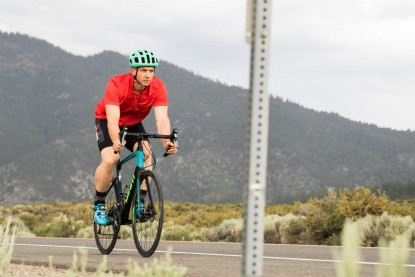 poc ventral air mips
poc ventral air mips
82
OVERALL SCORE
- Comfort 8.0
- Ventilation 9.0
- Adjustability 7.0
- Weight 9.0
- Style 7.0
- Durability 9.0
Weight: 295 g | Diameter Range: 56-61 cm
REASONS TO BUY
Excellent comfort
Great ventilation
Sunglass garage
Unique style
REASONS TO AVOID
Expensive
The POC Ventral Air Mips distinguishes itself among award-winning helmets by delivering exceptional ventilation and a remarkably comfortable design, all while maintaining a lightweight profile within our test group. Its strategically engineered deep recessed air channels efficiently direct airflow from the prominent forehead vents to the open trailing edge, maximizing cooling. The lightweight construction significantly enhances comfort, particularly during long-distance rides exceeding 100 miles, minimizing neck strain and fatigue. The liner pads effectively manage moisture and prevent the formation of pressure hotspots, contributing to overall comfort. Our testers consistently praised this model, with no significant complaints reported.
The distinctive shape and design language of the Ventral Air may not resonate with every cyclist’s aesthetic preferences. Departing from the conventional streamlined silhouettes of most road bike helmets, the Ventral Air introduces a novel geometric design aimed at the style-conscious road cyclist. The innovative venting configuration also contributes to a remarkably quiet ride, minimizing wind noise. A standout feature is the integrated sunglass garage, which securely holds eyewear even at high speeds. The webbing straps are easily adjustable and supple, featuring secure y-buckles that lie flat and comfortably under the ears. While the Ventral Air’s styling may be polarizing, its wide array of nearly a dozen color options increases the likelihood of finding a style that aligns with individual preferences, provided the higher price point is within budget. For riders who appreciate the design philosophy of the POC Ventral but seek a more affordable alternative, the POC Octal Mips presents a slightly less expensive option, offering adequate ventilation and durability, albeit with compromises in adjustability and overall comfort.
Read more: POC Ventral Air Mips review
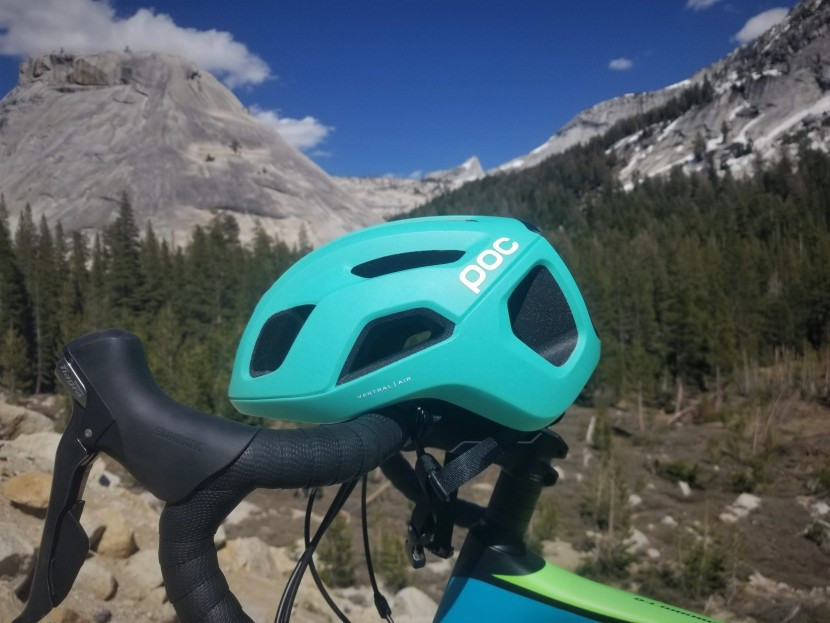 road bike helmet – this model performed extremely well and we consider it a well…
road bike helmet – this model performed extremely well and we consider it a well…
The POC Ventral Air Mips road bike helmet delivers excellent performance, offering a comfortable and well-ventilated option for cyclists who appreciate unique styling.
Credit: Ryan Baker
Product Comparison
[ We put the Z1 to the test on some long, grueling climbs.
We put the Z1 to the test on some long, grueling climbs.
Extensive testing across six key performance metrics was conducted on all road bike helmets in our review, with the Lazer Z1 standing out for its lightweight design, ventilation, comfort, and stylish aesthetics.
Credit: Nick Bruckbauer
Why Trust GearLab
To rigorously evaluate road bike helmets, we selected top-performing products available on the market for comprehensive testing and assessment. We conducted direct side-by-side comparisons during identical rides and under similar conditions, enabling us to objectively assess critical metrics such as ventilation and comfort. Comfort evaluations extended to all-day rides in diverse riding positions. Our testing encompassed a wide spectrum of weather conditions, including spring snowstorms, intense heat, heavy thunderstorms, challenging uphill climbs, and exhilarating descents, accumulating hundreds of miles of riding experience.
To maintain objectivity and impartiality in our testing process, we employed a scoring and rating system for each product based on six core performance metrics:
- Comfort (25% of overall score weighting)
- Ventilation (25% weighting)
- Adjustability (20% weighting)
- Weight (15% weighting)
- Style (7.5% weighting)
- Durability (7.5% weighting)
Our expert testing team comprises Nick Bruckbauer, Ryan Baker, and Luke Hollomon. Nick, a former competitive runner, transitioned to road cycling in the challenging mountainous terrain of Santa Barbara, CA. He currently resides and explores the outdoor recreation paradise of South Lake Tahoe, CA. Ryan, based in Mammoth Lakes, works as a ski patroller during winter. As the snow melts, he pursues his passion for cycling on demanding rides up the steep eastern Sierra slopes, stretching from Tahoe to Lone Pine. Luke, located in Richmond, VA, dedicates himself to riding and racing thousands of miles annually on the rolling roads that have shaped professional cyclists like Ben King, Emma Langley, and Eddie Anderson.
 We put the Z1 to the test on some long, grueling climbs.
We put the Z1 to the test on some long, grueling climbs.
The Lazer Z1 road bike helmet undergoing testing during long and challenging uphill climbs.
 Fast, light, and stylish describe the Giro Synthe Mips. Will it also…Fast, light, and stylish describe the Giro Synthe Mips. Will it also describe you?
Fast, light, and stylish describe the Giro Synthe Mips. Will it also…Fast, light, and stylish describe the Giro Synthe Mips. Will it also describe you?
The Giro Synthe Mips road bike helmet, characterized by its fast, light, and stylish design.
The POC Ventral Air SPIN lives up to its name effectively moving air for great venitlation.
The POC Ventral Air SPIN road bike helmet demonstrating its ventilation capabilities.
Analysis and Test Results
Our selection of helmets focused on models specifically designed for road biking. While all helmets included in our review meet the minimum safety standards mandated by the U.S. Government, construction techniques and design elements vary significantly across manufacturers and models. To assist you in identifying the best road bike helmet tailored to individual rider needs, we evaluated and scored each model based on six key performance metrics: comfort, adjustability, weight, style, ventilation, and durability.
A Note on Rotational Impact Protection: Many contemporary road bike helmets incorporate the Multi-directional Impact Protection System (Mips), a safety innovation designed to mitigate rotational forces during impacts. Mips technology involves a thin plastic liner positioned within the helmet, between the EPS foam and the padding that contacts the head. This liner acts as a “slip-plane,” allowing slight movement between the helmet and the head upon impact, effectively reducing rotational forces transmitted to the brain, which can occur in certain crash scenarios.
The majority of road bike helmets featured in our current review are equipped with an integrated Mips liner. In most models, the Mips liner consists of the standard thin plastic slip-plane layer situated between the EPS foam and the helmet padding. Two models in our test group, however, employ a more advanced approach. The Bell XR Spherical utilizes Mips Spherical technology, eliminating the conventional plastic liner in favor of a dual-density foam shell constructed from two interlocking pieces. These pieces are designed to rotate independently upon impact. While this sophisticated design does not necessarily provide superior crash protection compared to traditional Mips liners, it aims to enhance comfort, reduce weight, and minimize bulk.
Best Value Road Bike Helmet
To guide your selection towards the optimal balance of price and performance in your next road bike helmet, we assessed each helmet in our review relative to its competitors, identifying models that represent the best overall value. The Smith Persist stands out by delivering high-end performance features at a remarkably affordable price point. Similarly, the Giro Agilis offers features comparable to Giro’s premium offerings but with a slightly heavier construction and a significantly more accessible price tag.
Comfort
For road cyclists who frequently spend extended periods in the saddle for training and racing, helmet comfort is paramount. Ideally, a road bike helmet should become virtually imperceptible once worn, requiring no further thought or adjustment during a ride. While individual head shapes and sizes vary considerably among riders, our testers consistently identified specific design characteristics that contribute to a helmet’s ability to adapt to diverse head shapes, enhancing overall comfort for a wider range of users.
Our testing revealed that padding design, full circumference headband adjustability, and chinstrap design are crucial factors in determining overall helmet comfort. High-quality padding, particularly in the forehead and temple regions, is essential because most helmet headband adjustment systems tighten at the rear, effectively pressing the forehead against the front of the helmet. While padding quality is critical, we observed that the strategic placement and coverage of padding, along with the shape of the foam liner, are more influential than mere padding thickness or density. The Trek Velocis, Bell XR Spherical, and POC Ventral Air stood out for providing exceptional comfort with strategically minimal, well-placed pads in key areas.
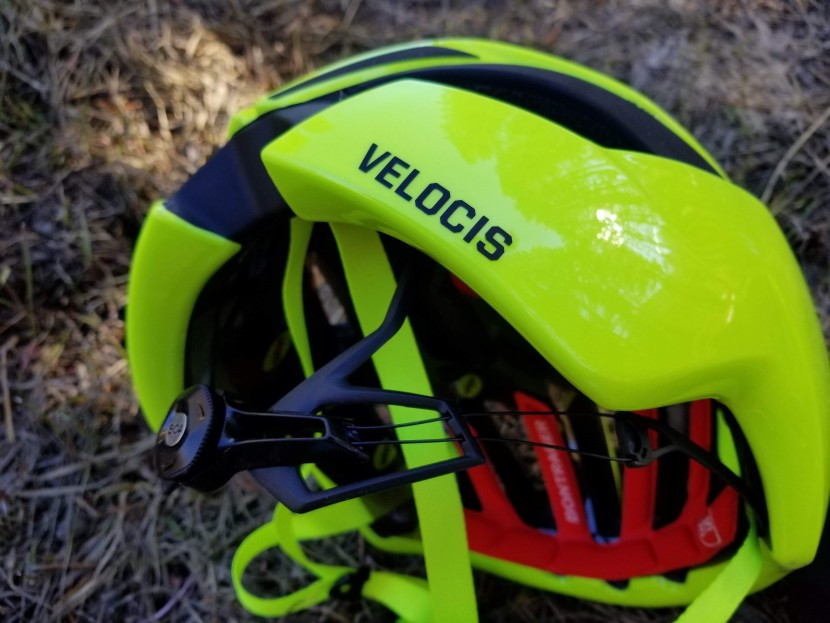 road bike helmet – the velocis
road bike helmet – the velocis
The Trek Velocis road bike helmet features a BOA adjustment system that is easy to tighten and padding that ensures all-day riding comfort.
Credit: Ryan Baker
All helmets in our test group incorporate internal headband systems that enable size adjustments to accommodate various head shapes and sizes. The most effective designs feature a full circumference loop around the head, as opposed to partial loops that anchor into the helmet liner near the temples. The Giro Agilis incorporates a modern Roc Loc 5.5 headband system that seamlessly integrates the Mips liner into the headband structure, cradling the head for a secure and customized fit. The adjustment systems on the Giro Synthe Mips also wrap entirely around the head, contributing to these models’ top comfort scores.
 road bike helmet – the comfortable padding design, full circumference headband, and…
road bike helmet – the comfortable padding design, full circumference headband, and…
The Giro Synthe road bike helmet’s comfortable padding design, full circumference headband, and adjustable Y-buckle chinstraps contribute to its top-tier comfort rating in our tests.
Credit: Nick Bruckbauer
Chinstrap design significantly impacts helmet comfort. Our testers favored helmets with thin webbing straps and a Y-buckle configuration, allowing the straps to lie flat against the face without causing irritation or chafing. Specialized, Bontrager, and Giro models employ varying strap designs, but models from all three brands excel with thin, supple webbing material and well-designed Y-buckles that ensure a flat, comfortable strap position.
 road bike helmet – the bell xr spherical has great padding, comfortable straps, and…
road bike helmet – the bell xr spherical has great padding, comfortable straps, and…
The Bell XR Spherical road bike helmet combines excellent padding, comfortable straps, and classic styling, earning positive feedback from testers.
Credit: Emily Hollomon
Overall, the Trek Velocis Mips, the Giro Synthe Mips, and the Bell XR Spherical emerged as the most comfortable models in our testing. These helmets consistently demonstrated the optimal combination of sufficient and strategically placed padding, highly adjustable headband systems, and comfortable chinstrap designs.
Ventilation
Effective helmet ventilation is crucial for regulating head and core temperature, enhancing both comfort and cycling performance, especially during strenuous rides in warm conditions. As aerodynamic considerations gain prominence in helmet design, balancing aerodynamic efficiency with optimal ventilation presents an ongoing challenge for manufacturers. The most effectively ventilated helmets are not necessarily those with the highest number of vents, but rather those that integrate strategically positioned vents with internal channeling systems to maximize airflow and heat dissipation. The Trek Velocis exemplifies this principle, achieving ventilation performance comparable to the highly ventilated S-Works Prevail 3 while maintaining a less overtly open design.
The S-Works Prevail 3 secured the top position as the best-ventilated helmet in our evaluation. Its innovative aramid cable construction minimizes obstruction within the vents, allowing air to flow freely at any speed. Only the Trek Velocis approached the Prevail 3’s level of ventilation performance. The Velocis’s deep recessed channels effectively draw air into the helmet, and the 37.5 padding material creates a slight separation between the helmet and the head, facilitating consistent airflow across the scalp.
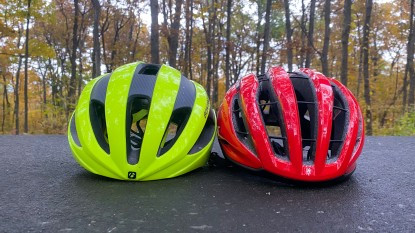 road bike helmet – the velocis and prevail solve ventilation very different ways with…
road bike helmet – the velocis and prevail solve ventilation very different ways with…
The Trek Velocis and Specialized Prevail 3 road bike helmets demonstrate different ventilation design approaches, achieving comparable levels of effectiveness.
Credit: Emily Hollomon
Another standout performer in ventilation is the Lazer Z1 Mips, which incorporates 31 vents into one of the lightest helmets in our test group.
The Airnet provides excellent ventilation with its unique vent configuration.
The Specialized Airnet road bike helmet utilizing a unique vent configuration for effective ventilation.
 The Z1The Z1’s 31 vents provide excellent airflow and ventilation.
The Z1The Z1’s 31 vents provide excellent airflow and ventilation.
The Lazer Z1 road bike helmet showcasing its 31 vents designed for optimal airflow and ventilation.
The Octal has aggressively large vents, and lacks a Mips liner, leaving nothing to obstruct the flow of air over your head.
The POC Octal road bike helmet featuring aggressively large vents for maximum airflow.
Lower-performing models, such as the Bontrager Starvos Wavecel, can become noticeably hot and stifling even in moderately warm conditions. While aerodynamic helmets often prioritize reduced drag over maximum ventilation, some models incorporate retractable vent covers, providing riders with the option to switch between enhanced ventilation and improved aerodynamics as needed.
Adjustability
Proper helmet fit is crucial for both comfort and intended protective function. For a helmet to effectively protect the head during a crash, it must remain securely positioned. Correct fore/aft positioning, headband tightness, and chinstrap tension are essential to ensure the helmet stays squarely on the head and is ready to provide protection when required.
All helmets in our review feature a chinstrap system with a strap positioned behind the ear and another in front, joined by a plastic Y-buckle below the ear. Most helmets utilize adjustable Y-buckles, enabling riders to modify the vertical position of the straps for optimal tension and comfort. Models with adjustable Y-buckles generally received higher adjustability scores in our evaluation. The Trek Velocis, with its user-friendly adjustable Y-buckle system, earned high marks in this category. The Velocis strap design also integrates with the helmet’s EPS foam body, enhancing side-to-side adjustability. Other helmets employ straps that are permanently anchored to the liner, limiting adjustability.
 The fixed Y-buckles on the Airnet are comfortable and well-placed…The fixed Y-buckles on the Airnet are comfortable and well-placed, but the lack of adjustability could be an issue for some riders.
The fixed Y-buckles on the Airnet are comfortable and well-placed…The fixed Y-buckles on the Airnet are comfortable and well-placed, but the lack of adjustability could be an issue for some riders.
The Specialized Airnet road bike helmet featuring fixed Y-buckles, which while comfortable and well-placed, may limit adjustability for some riders.
Giro’s chinstrap Y-buckles can easily be adjusted to be either lower down by the chin or higher up by the ears.
Giro road bike helmets demonstrating easily adjustable chinstrap Y-buckles for customized fit.
 SmithSmith’s chinstrap system has a simple quick-release tab on the Y-buckle, making adjustment a breeze.
SmithSmith’s chinstrap system has a simple quick-release tab on the Y-buckle, making adjustment a breeze.
Smith road bike helmets incorporating a chinstrap system with a simple quick-release tab on the Y-buckle for easy adjustments.
Each helmet is equipped with an adjustable dial located near the back, enabling riders to fine-tune the fit and tension of the headband. The Lazer Z-1 Mips features a unique design with the tension dial positioned on top of the helmet. While internal headband sizing varies across manufacturers, most medium-sized helmets in our test group offer 4-6 cm of size adjustment, typically covering a range of 52-60 cm. Large models generally provide 2-4 cm of adjustment, typically within a 59-63 cm size range.
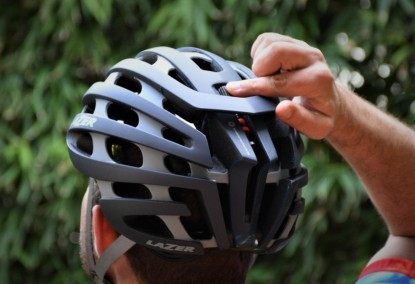 road bike helmet – the lazer z-1 has a unique headband tensioning dial on the top of…
road bike helmet – the lazer z-1 has a unique headband tensioning dial on the top of…
The Lazer Z-1 road bike helmet featuring a unique headband tensioning dial positioned on the top of the helmet.
Credit: Nick Bruckbauer
While all helmet tension dials function as intended, some are smaller, such as on the Giro Synthe Mips, and others, like the Lazer Z-1 Mips, are partially concealed, potentially making them slightly more challenging to operate with thick gloves or cold hands. Our preferred dial designs offer 360-degree accessibility, exemplified by the Bell Stratus Mips, with dials large enough to be adjusted even when wearing gloves or with numb fingers. Regardless of the adjustment mechanism, our testers prioritized designs that did not cause neck discomfort during head flexion. The 360-degree dial on the Trek Velocis Mips proved to be unnoticeable while riding.
The Giro Synthe road bike helmet’s Roc Loc 5 fit system includes a small tab system allowing 2 cm of fore/aft headband position adjustment.
Credit: Nick Bruckbauer
Each helmet in our review also provides fore and aft adjustment of the headband system, typically offering between 2-5 cm of adjustment range. None of the fore/aft adjustment mechanisms are particularly user-friendly to adjust on the fly, but once set, they generally remain in place, providing a snug and consistent fit without requiring further adjustments. Some adjustment devices are partially obscured by the Mips liner, further complicating adjustment, as is the case with the Lazer Z-1 Mips. We favored exposed adjusters, such as the design found on the Giro Synthe Mips, for ease of access.
Weight
Road cycling is a weight-sensitive sport, where both professional and amateur cyclists actively seek to minimize their equipment weight. Every added gram can incrementally impede climbing performance, and a heavier helmet can contribute to neck fatigue during long rides. While helmet weight can influence comfort, all helmets in our test group are relatively lightweight compared to the broader helmet market. Therefore, weight comparisons within our review are relative to the tested models.
It’s important to note that the Bell Stratus was tested in a size medium, while the remaining helmets were tested in size large. Consequently, its measured weight may appear lower in direct comparisons with other models’ scores.
We independently weighed each product to ensure objective comparisons, as manufacturer- заявленные weights can sometimes be inaccurate. We are pleased to report that all helmets we measured were within 5% or less of their заявленные weights, a negligible difference considering potential measurement tolerances and precision.
 road bike helmet – the z1 from lazer is one of the lightest and best-ventilated helmets…
road bike helmet – the z1 from lazer is one of the lightest and best-ventilated helmets…
The Lazer Z1 road bike helmet, recognized as one of the lightest and best-ventilated options in our tests.
Credit: Nick Bruckbauer
Interestingly, some of the higher-priced helmets in our review are actually heavier than certain more affordable counterparts. This is attributable to several factors. Many premium helmets incorporate more extensive polycarbonate shell coverage over the EPS foam liner, which marginally increases weight but also enhances overall durability. Furthermore, most helmets in our review include an internal Mips liner for added rotational impact protection, contributing an additional 20-30 grams compared to non-Mips-equipped versions. We believe the potential safety advantages of a Mips liner outweigh the minor weight increment.
Style
Aesthetics are subjective, and “beauty is in the eye of the beholder.” However, many road bike helmets incorporate unique design features that are not directly quantified by other performance metrics. This “style” metric aims to acknowledge and highlight features such as integrated rubber sunglasses holders, retractable vents, or distinctive aesthetic elements.
The S-Works Prevail 3 achieved a high style ranking due to its low-profile, airy design and distinctive vent layout. We also appreciate the Giro Synthe for its streamlined silhouette and the Lazer Z-1 for its unique adjustment system integration. Our testers were particularly impressed by the distinctive design of the POC Ventral Air, although its styling may not appeal universally to all tastes.
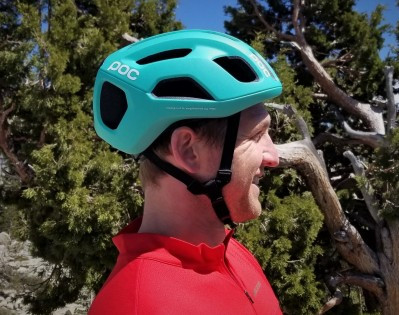 The Y-buckle system is easy to adjust and the supple webbing does…The Y-buckle system is easy to adjust and the supple webbing does not chaffe.
The Y-buckle system is easy to adjust and the supple webbing does…The Y-buckle system is easy to adjust and the supple webbing does not chaffe.
The POC Ventral Air road bike helmet featuring an easily adjustable Y-buckle system and supple webbing designed to prevent chafing.
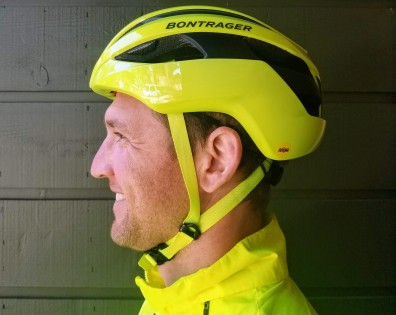 The Velocis has a semi-aerodynamic shape that is a little…The Velocis has a semi-aerodynamic shape that is a little higher-profile than many other helmets.
The Velocis has a semi-aerodynamic shape that is a little…The Velocis has a semi-aerodynamic shape that is a little higher-profile than many other helmets.
The Trek Velocis road bike helmet exhibiting a semi-aerodynamic profile that is slightly higher-profile compared to many other helmets.
Durability
The EPS foam commonly used in helmet liners is a relatively soft material susceptible to dents and abrasion. The most durable road helmets incorporate a protective polycarbonate shell that extends down to encase the base of the foam liner, minimizing exposed foam. Helmets with this full-wrap shell design tend to exhibit greater resilience to everyday wear and tear, accidental bumps, and scrapes. However, many helmet manufacturers prioritize weight reduction over maximum shell coverage. Regardless of construction quality, helmets are typically designed for single-impact protection in a crash scenario. Our durability assessment focuses on a helmet’s ability to withstand daily use and minor impacts, rather than crash performance.
Most road bike helmets are constructed from Expanded Polystyrene (EPS) foam and are engineered to withstand a single significant impact, where the foam liner is designed to crush and compress, absorbing impact energy. Once a helmet has been subjected to an impact resulting in compression, cracking, or damage, it should be replaced, as its protective capabilities will be compromised. Helmets utilizing Expanded Polypropylene (EPP) foam tend to exhibit a more rubbery, resilient characteristic with multi-impact capabilities, meaning they can withstand multiple minor impacts without significant deformation or performance degradation. However, EPP foam may offer less energy absorption in a single severe impact compared to EPS foam.
The POC Ventral Air Spin and Bell XR Spherical led our durability rankings. Both models feature minimal exposed EPS foam on the helmet exterior. Upon closer inspection, we observed that their polycarbonate shells almost completely cover the upper portion of the helmet and extend around the base, providing comprehensive protection. The Trek Velocis Mips and S-Works Prevail 3 also ranked highly in durability. Both incorporate polycarbonate shells that fully encase all external EPS foam. Additionally, their shells wrap from the brim to the occiput and extend into the interior of each vent, further safeguarding the vulnerable EPS foam.
 road bike helmet – the persist has no exposed eps foam externally, preventing dings and…
road bike helmet – the persist has no exposed eps foam externally, preventing dings and…
The Smith Persist road bike helmet featuring a polycarbonate shell that fully encloses the EPS foam, preventing external dings and scratches.
Credit: Emily Hollomon
Conclusion
The primary function of any road bike helmet is to protect your head in the event of a crash, and all helmets sold in the USA must meet the same minimum safety standards. While all helmets offer a baseline level of crash protection, significant differences exist beyond basic safety compliance. Various helmet designs incorporate advanced features such as Mips liners for enhanced safety, adjustable headbands and chinstraps for customized fit, comfortable padding for extended rides, and varying ventilation levels for thermal regulation. Our team of testers has accumulated thousands of miles in the saddle, across diverse riding conditions, to thoroughly evaluate the nuances of each helmet and assist you in selecting the best road bike helmet for your specific needs and riding style.
If you are in the market for a new bike or bike accessories, our extensive and meticulously curated list of bike and bike-related products may be a valuable resource. We have rigorously tested a wide range of cycling products, from electric bikes to mountain bikes, providing comprehensive reviews and recommendations to inform your purchasing decisions.

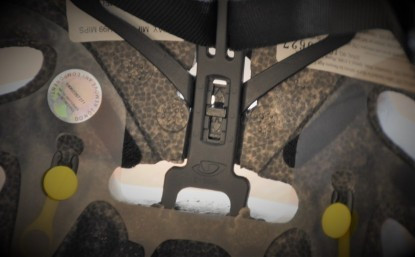 road bike helmet – the synthe
road bike helmet – the synthe